The Facts About the Origins of the Concentration Camps and Their Administration
Article from The Barnes Review, Jan./Feb. 2001, pp. 11-16.
Here’s a fascinating look at the concentration camp system inside Germany, devoid of the jewish hysteria often associated with the subject in jewish Hollywood films and in the “mainstream” jewish media and academia. The Barnes Review and The Scriptorium are pleased to present what may be the first-ever detailed examination of the concentration camp system, presenting a far different picture from what we’ve been told by the jews.
In propagating a politicized view of German history many in the jewish media and jewish academia have attempted to portray the German system of imprisonment in concentration camps as some sort of precursor to genocide, as a living hell where it was official German policy to make life miserable and to victimize, beat, torture, rape and murder innocent civilians simply because of religious or political persuasion or sexual orientation.
Dachau: Former Munitions Plant
Is this sensational jewish view of history correct? No, the role of German concentration camps was much different and probably better in many ways than the American prison system today. German concentration camps had a much more positive role to play in Hitler’s new and progressive National Socialist state.
The facts will bear out that the jewish Establishment historians have purveyed a view of concentration camp life that cannot be substantiated.
The daily life in a concentration camp was much different than most historians will admit.
In 1948, Paul Rassinier, a former Socialist and critic of National Socialist Germany who had himself been interned in the concentration camps of Buchenwald and Dora, published Crossing the Line (Le Passage de la Ligne). In this work, Rassinier claimed that the Germans had been benign, if not positive, in their motives for putting enemies of Hitler’s National Socialist state in concentration camps. Rassinier claimed that the concentration camps were a “gesture of compassion” since inmates had been placed where they could “not hurt the new regime and where they could be protected from the public anger.”
First prisoner transport arrives at Dachau
Not only did the concentration camps protect anti-social elements in Rassinier’s view, but they were also designed to “rehabilitate the strayed sheep and to bring them back to a healthier concept of the German community.”1 According to Rassinier, the German government was helping those whom it committed to concentration camps by putting them in a setting so that they could be rehabilitated into more productive members of the German community.
SS guards arriving at Dachau 27 May 1933
Those who fell into the categories of persons assigned to concentration camps included any person condemned for treasonable activities, as well as judeo-Communist Party officials and anyone who incited a German citizen to refuse military service.2 Persons who were considered by the authorities of the Third Reich as being an anti-social malefactor were also sent to the camps.
Aerial view of Dachau
Anti-social malefactors consisted of professional and habitual criminals, that is, those people who had been sentenced to a minimum of six months imprisonment or hard labor on at least three separate occasions. Anti-social malefactors also specifically included beggars, prostitutes, homosexuals, drunkards, psychopaths and lunatics.3 Persons who were “work shy” were also sent to concentration camps. According to Heinrich Himmler, the head of the SS, work shy meant unemployed men who “could be proved to have refused without adequate reason employment offered to them on two occasions.”4
The first persons arrested and sent to concentration camps were communists who had taken part in efforts to undermine the fabric of the German state. Most of these communists arrested were denounced to local authorities by fellow workers and neighbors who were concerned about their activities.
During March and April 1933, the German people reported the activities of over 10,000 communists in Germany. Given the large membership and well-organized activities of the German Communist Party (KPD), the local jails were soon filled, and the National Socialist government in Berlin was forced to decide where to house these persons, who were a clear and present danger to the continuation of Germany as an independent and sovereign nation. With the jails and prisons filled to capacity, local officials began to take over abandoned warehouses and factories to hold the communists. These makeshift holding facilities have since become known as “wild concentration camps” since they were spur-of-the-moment inventions.
“Healthy” looking prisoners at Dachau
The name “concentration camp” simply means an area where dangerous elements are concentrated. Hitler once said the idea for concentration camps came from his studies of the Boer War in South Africa.5
During that war, the British built camps and concentrated women and children of Dutch ancestry. During their confinement in British concentration camps, over 26,000 died mainly of starvation, since the British made no effort to feed the unarmed and helpless women, nor did they allow them to leave and go back to their farmsteads. This action of the British against unarmed women and children mainly goes overlooked by jewish Establishment historians, who instead accuse the German concentration camps of being death camps whose sole purpose was killing unarmed civilians. But this is not the case.
Main SS guardhouse Dachau circa 1939
The first official concentration camp set up in Germany was established about 12 miles from Munich in the town of Dachau, inside a former gunpowder factory, on March 22, 1933. Unlike what judeo-Allied propaganda would have us believe, the Germans were not ashamed of this camp. In fact, Heinrich Himmler held a press conference to announce its opening two days before the first inmates were scheduled to arrive. His announcement was carried in German newspapers,6 and the camp was opened with the arrival of 200 communists. But the camp was built to hold 5,000 and was mainly established to act as a deterrent to further communist activity.
The Commandants HQ at Dachau – March 1933
Himmler stated that it was his promise not to wait until crimes were committed before arresting criminals, and pledged that, in order to protect the populace, professional criminals who had been sentenced many times would be pursued more ruthlessly than before and isolated away from the German people by being incarcerated in concentration camps. Himmler also added that his camps were to be models of cleanliness, order and instruction.
It was through this instruction that Himmler hoped to re-educate minor criminals as well as communists.
Entrance gate to SS shooting range in Hebertshausen outside Dachau – 20 April 1945
Himmler had ordered strong disciplinary measures to be employed, but the treatment inmates received was just, and they learned trades through their work and training. In the concentration camps, the motto was: “There is one way to freedom. Its milestones are: obedience, zeal, honesty, order, cleanliness, temperance, truth, sense of sacrifice and love for the Fatherland.”7
In the Soviet Union’s “model” of socialism, the German communists found what they were looking for: liberalism, urbanism, and modernism – all of which rejected the traditional Aryan-German way of life.
For this reason, the German communists looked at Hitler’s appointment to the chancellorship by President Paul von Hindenburg as a signal for an uprising aimed at creating a German soviet state, closely modeled on the Soviet Union and taking its orders from the Comintern in Moscow. But Hitler saw the threat the communists posed to German society, and after the burning of the Reichstag by a communist, he reacted swiftly to take them into custody. Hitler now decided to build the first concentration camps.
The Jourhaus (Main Entrance) at Dachau – May 1945
However, instead of being vindictive or out to do harm to the communists, the concentration camp at Dachau was designed to reform them and make them into citizens that the Germans could be proud of – citizens who could return to German society at large and live out their lives as peaceful and proper German men and women. Instead of being an institution aimed at punishment, the German system of concentration camps was designed to reform and to reeducate enemies of the new German state.
A correspondent for The Jew York Times was allowed to visit Dachau shortly after it was opened and came away with the impression that the commandant of the camp, Theodor Eicke, and the men under his command took their job of reeducation seriously.
“They honestly and sincerely believed that their task was pedagogic rather than punitive…. They felt sincerely sorry for the misguided non-Nazis who had not yet found the true faith.”8
Not only had the inmates not yet found faith in the leadership of Adolf Hitler, but they also took part in or supported subversive activities aimed at overthrowing the state.
A prisoner treated with dental surgery in the Dachau sickbay circa 1938/41
An internal document written in 1934 and circulated at Gestapo headquarters stated that National Socialist Germany would not be complete until its opponents learned to support it and identify with the goals of the German community at large. The writer of the document reiterated the educational value and ideological indoctrination that the camps were to instill in the inmates, and suggested imbuing the inmates with the knowledge that upon their release they would be able to become full members of German society.9 Just a short time later, another Gestapo document warned all state authorities not to harass released inmates so as not to make their complete re-integration into German society difficult.10
The Germans themselves often referred to these camps as “education camps.”
In the summer of 1942, three years after World War II began, Himmler was still emphasizing the re-educational aspects of the camps when he wrote a letter to Oswald Pohl.11 The language that he used in this letter was also given as part of official instructions to guards at the camps.
Himmler instructed each guard to make his behavior a personal example to the prisoners, in order to imbue them with respect for the National Socialist state and to teach them how to behave properly.12
This re-education at the camps was to stress traditional Aryan virtues, such as hard work, strict discipline, a belief in law and order, support for the complete family and respect for traditional German society, as well as encouraging them to respect the National Socialist state and the National Socialist movement in general.
Over the years, tens of thousands of inmates were released from the camps once they had shown that they had chosen to reform themselves.
On many occasions the commandants of the camps had determined that inmates had abandoned their old ways and had chosen to become loyal members of German society. As late as October 1944, inmates were being released, and many of these were communists who had abandoned their previous beliefs.13
Dachau prison barracks – circa 1945
Of the persons sent to the concentration camps, many were sent there by court order for fixed terms. Other persons were arrested because of the danger they presented to German society. Some prisoners, who had been convicted during the Weimar era, were sent to the concentration camps after their release from prison. Since some of these prisoners were murderers, rapists and pedophiles, the National Socialist state refused to allow them to return to German society until the authorities were sure that they had abandoned their old ways. Contrary to modern political myth, German newspapers frequently carried stories on the concentration camps and often reported on the internment of dangerous persons.
Many of the camps were open to inspection by foreign diplomats and even by German civilians.
Often the curious persons would travel to the camps only to be met by friendly guards and escorted through the camps on a personal tour. Of the tens of thousands of prisoners who were released, most probably told their relatives, friends and neighbors of the conditions present in the camps. Over the years, judges, lawyers, members of the clergy, social workers and repairmen were allowed into the camps for official business.
Postcard: Dachau SS residential complex – 1941
Merchants often visited the camps to bring new stocks of supplies, and local civilians were often employed in the camps. If conditions in the camps had been deplorable, German society would have learned of it and would have been outraged. The Germans were and still are a decent people whose only crime in establishing the camps was showing leniency to persons who wanted to do them harm.
In a book written on the camp established at Oranienburg, Werner Schafer claimed that some citizens in the local communities asked permission to send some of their rebelling children to the camps to learn self-discipline. Schafer also said that
there were some prisoners who were offered release who refused since they could not remember doing work since the beginning of the Great Depression.14
Schafer listed the types of food eaten by the prisoners and computed how much weight they had gained during their internment in the camp. Citizens of National Socialist Germany therefore had good reason to support the officials who administered the camps.
The nature of imprisonment in concentration camps can best be guessed by a document signed by Himmler, in which the principles of internment in a concentration camp were clarified. The document was not meant for public distribution and was classified “secret” before being sent to senior officers of the Gestapo on 27 May 1942. It reads:
Recently, various officials in the party and the government have begun threatening to lodge complaints with the police against citizens, or to have them imprisoned in concentration camps, in order to give greater force to various orders and decrees.
In this manner, for instance, one officer threatened a citizen that he would be sent to a camp for “police interrogation” if he did not produce within five days a certain form, as he had been told to do by one of the officials.
I request in all seriousness that the parties involved be instructed to cease this practice immediately, and if this is not done I will take upon myself to declare publicly that citizens are not liable in such instances to either police investigation or imprisonment in a concentration camp.
The most severe punishments lose their deterrent ability when they are threatened at every opportunity, or when the impression is given that every official, in every office, is authorized to make use of it.
Imprisonment in a concentration camp, involving as it does separation from one’s family, isolation from the outside world, and the hard labor assigned to the prisoner, is the most severe of punishments.
Its use is reserved exclusively for the secret police, in accordance with precise regulations which specify the form of imprisonment and its term. In this matter I have retained for myself a large measure of authority and exclusive discretion.
All in all the German people are uniquely fair-minded. Most Germans obey the instructions of the authorities of their own free will and desire. Instructions accompanied by threats will, however, be received with disrespect and will be obeyed only unwillingly, not to mention that the multiplication of threats of this type will give a completely false impression, both here and abroad.15
Not only does this document illuminate the fact that the concentration camp system was not vindictive or there to terrorize the civilian population, but it also shows that the leaders of the state had concern for the prisoners. Himmler recognized that imprisonment involved isolation and separation from loved ones and was determined to allow the German people to know that the only persons imprisoned in the camps were extreme cases.
Dachau maintenance building with Heinrich Himmler quote on rooftop – 1939-41
But more importantly, as the value of hindsight allows us to [see], the document also allows us to understand where some of the judeo-Allied propaganda came from; minor officials were eager to add threats to their orders in an attempt to give the impression that they were more powerful than they actually were. Because of the actions of these minor officials, the judeo-Allies had the propaganda to claim that the concentration camps were there to terrorize the civilian population and to force them to become subservient to a state that only cared about itself. This was exactly what Himmler was afraid would happen: that the concentration camps would be seen to be a punitive punishment and not the center of re-education that they really were.
To meet the needs of re-education, the camp command in each camp was divided into several departments, which dealt with matters of administration, personnel, transport, communications, mail, equipment, kitchen work, supplies, health and sanitation and so forth. The camp commandants were assisted by a deputy, an adjutant, a master sergeant, a medical officer and education officer, a legal officer, a fire officer and others.
The commandants were held personally responsible for the re-education of those prisoners who were not considered to be “lost cases.” Because the camps were often open for public inspections, the commandants were also required to have some amount of political sensitivity. Starting in 1942, the commandants were also responsible for the work of the camp doctor and the medical staff.
The camp commandants had full responsibility for almost everything that happened in the camps, except for the work of the political departments. The political department operated in the camp as an extension of the Gestapo, and a plainclothes officer of the secret police headed it. This department dealt with the reception and registration of inmates, and was also in charge of their release. This department:
- Kept files on each inmate that included personal details about the inmate, the inmate’s picture and fingerprints;
- Was responsible for filing death notices and was responsible for passing this information on to government authorities;
- Corresponded with the relatives of the inmates in cases where there was a need for guardianship of underage children, insurance claims and so forth;
- Had the authority to decree special conditions of imprisonment;
- Was responsible for all interrogation that went on in the camps; and,
- Supervised prisoner informers, censorship, field security, and the prevention of rebellion.
Not all members of the command had direct and daily contact with the inmates. The inmates were kept in a special compound within the camps, overseen by their own commanding officer and his staff. Some staff officers were responsible for head counts, others for work arrangements; others actually accompanied prisoners when they went out to work, while other officers were responsible for each of the living quarters, which were themselves referred to as a block. The personal deputy of the camp commandant usually oversaw the prisoner division of the camp.
The camp commandants were also required to prevent cruelty to inmates.
A training manual for camp guards asked the following question: “What is completely prohibited a camp guard? Answer: Under all circumstances he is forbidden to strike prisoners at his own initiative, outside the framework of the disciplinary regulations.”
In 1935 Reinhard Heydrich wrote to the camp guards stating that “it is not becoming an interrogator to insult a prisoner, demean him, or behave with rudeness and brutalize or torture him when there is no need to do so.” Heydrich went on and warned the camp men that if they beat prisoners they would be court-martialed.16 Eicke himself wrote in 1937 that “the guards should be instructed to abstain from mistreating prisoners…. Even if a guard had done no more than slap a prisoner’s face, the slap will be considered an act of brutality and the guard will be punished.”17
The SS actually punished a number of its own men for their conduct while serving in the concentration camps. Two concentration camp commandants, Adam Gruenwald and Karl Chmielewshi, were placed on trial and found guilty of the deaths of prisoners as a result of brutality in their camps. The SS tried over 700 staff members throughout the course of the Third Reich for their conduct toward inmates. This was because the SS and the National Socialist state always considered concentration camps to be re-education camps first and foremost.
It is true that persons who were considered to be hopeless cases such as habitual offenders were sent to the camps, but most prisoners always could earn their release by conforming to traditional Aryan-German standards of conduct. Unfortunately, many guards could not tell the difference between the habitual criminals and those who were there to be re-educated. This problem plagued the camp administration throughout the history of the Third Reich.
Oswald Pohl complained that “As a result of my personal attention to the matter, and the repeated irregularities recently noted, I have learned that many of the guards at the camps are aware only in the faintest way of the obligations imposed upon them.”18
But historians must take into consideration the fact that tens of thousands of individuals served in the camps. If 700 committed crimes and were punished for it, it only highlights the fact that the other tens of thousands of Germans serving in the camps took their responsibilities seriously.
Most camp men understood that their personal behavior was a way of encouraging inmates to aspire to be upstanding and proud citizens of Germany According to an SS booklet:
“The prisoner must know that the guard represents a philosophy superior to his, an unblemished political approach and a higher moral level, and the prisoner must take these as a personal example as part of his efforts to correct himself so that he may once again be a loyal citizen in his community.”19
In April 1939, Adolf Hitler celebrated his 50th birthday. To celebrate this occasion, plans were drawn up for a pardon for several thousand prisoners in the camps. The instructions that determined who was to be freed and who would remain as an inmate reveal the different kinds of prisoners in the camps as well as revealing Hitler’s generosity and good will. The intention of the pardon was to free inmates who were brought to the camps in 1933, six years before.
It was determined to at least consider releasing repeat offenders who were arrested in the years 1933 to 1934 for short sentences and who had at least served a year in the camps; political and white-collar offenders who had been convicted on minor offenses and who had served at least six months; prisoners of 60 or more years of age, including Jehovah’s Witnesses whose faith would not allow them to swear loyalty to the German state; first-time homosexuals who had not been convicted of sexual relations with minors; as well as prisoners who had in the past been members of the National Socialist Party.20
Then in 1941 the camps were classified into four groups, in accordance with the severity of the discipline and conditions of imprisonment imposed upon the inmates. Those prisoners who had been imprisoned for minor offenses and whom the SS considered to be possible to re-educate had the conditions of their imprisonment eased.
The workdays in the camps were formalized in 1938. On weekdays, the inmates worked from 0730 to 1200 and from 1230 to 1700, for a total of nine hours a day. On Saturdays work was from 0730-1200, for a total of four and one-half hours.
Not only were Saturday afternoons free, but Christian inmates had all of Sunday to attend their own services within the camp and to contemplate the reasons for their imprisonment.21
Inside the camp, the barracks were segregated by sex, but in many cases prisoners were allowed to marry, even other prisoners. Registration in such cases was carried out by SS officers.22 The heirs of any prisoner who died while being held at one of the camps were eligible to collect their life insurance. Since the life insurance policies would expire if the premiums were not paid, and the inmates were incarcerated and without any substantial income, the SS came up with a solution that jewish Establishment historians will not give them credit for. The SS set up its own fund to pay the insurance premiums of prisoners until the day they died.23 In this way, the loved ones of incarcerated inmates would not be overly burdened if their relative died while in custody.
The shop (left) with greenhouses and herb gardens – Dachau 1941
In 1936, the question was raised for the first time as to who would take care of the children when both parents were prisoners in concentration camps. Instead of taking the children away from their loving parents as is now done in countries such as the U.S. and Great Britain, the National Socialist authorities in Germany decided it would be better for the children if the parents were released on a rotating monthly basis so at least one parent would always be there to care for their needs. This rotating release continued until one of the parents was released for good.24
Needless to say, this program did pose a slight security risk to Germany, but Hitler apparently was more concerned about the welfare of young German children than he was with anything else.
Even though judeo-Allied war-time propaganda concerning the German concentration camps paints a bleak picture with ritual murder, rape, assault and other crimes, the facts of the period do not support this view.
View of the gardens and greenhouse of the Dachau concentration camp – 1944
The efforts of the National Socialist authorities to rehabilitate and re-educate incarcerated criminals and communists show a dedication and a firm belief in their convictions that, in comparison, the United States and Great Britain are sorely lacking in their own prison administrations. Those Germans, tens of thousands of patriotic citizens, who served in the camps as doctors, nurses, cooks, clerks, bookkeepers, and guards, were much maligned and viciously attacked by judeo-Allied authorities in post-war Germany.
Classic photo showing a fat jewish prisoner during roll call at Dachau – 20 July 1938
Notes:
1See Pierre Hofstetter, Introduction to Paul Rassinier, Debunking the Genocide Myth: A Study of the Nazi Concentration Camps and the Alleged Extermination of European Jewry (Torrance, California, 1978), p. x. …back…
2Heiniz Hoehne, The Order of the Death’s Head (New York, 1966), p. 225. …back…
3Ibid., p. 226. …back…
4Ibid., quoted in, p. 226. …back…
5Max Domarus, Hitler Reden, v. 3 (Wiesbaden: R. Loweit, 1973), p. 58. …back…
6Becker, Hitlers Machtergreifung, pp. 149-50. …back…
7Ibid., Frs. 2494-5. …back…
8“Nazi Prison Camps to be Permanent,” The New York Times, July 27, 1933, p. 7. …back…
9BAKO R 58/264 fol. 1309 u. 198a. …back…
10Ibid. …back…
11BAKO NS 19 320, May 29, 1942. …back…
12BAKO NS 3 426, July 27, 1943. …back…
13BAKO NS 3 vol. 401. …back…
14Schafer, Konzentrationslager Oranienburg, p. 247. …back…
15BAKO R 58 1027 fol. 1-291. …back…
16BAKO R 58 264 fol. 309 u. 198a RSHA, January 8, 1935. …back…
17TV Befehlsblätter 1937, no. 5, p. 12, TV file, Berlin Document Center. …back…
18BAKO NS 3 442, November 7, 1944. …back…
19Aufgaben und Pflichten der Wachposten, July 27, 1943, BAKO NS 3 426. …back…
20BAKO R 58/1027 fold. 1-291. …back…
21Natzweiler Routine Orders, February 25, 1943, American Historical Association, Captured German Documents, Microfiled at the Berlin Document Center, 7. 75 R. 216 2/755081. …back…
22BAKO NS 3 Vol. 426, May 1943. …back…
23Weiterversicherung von Häftlingen, BAKO NS 3 405. …back…
24BAKO R 58 246 fol. 1 309 u. 198a. (RSHA), April 21, 1936. …back…
Related posts:
Views: 0
 RSS Feed
RSS Feed
















 March 24th, 2021
March 24th, 2021  Awake Goy
Awake Goy 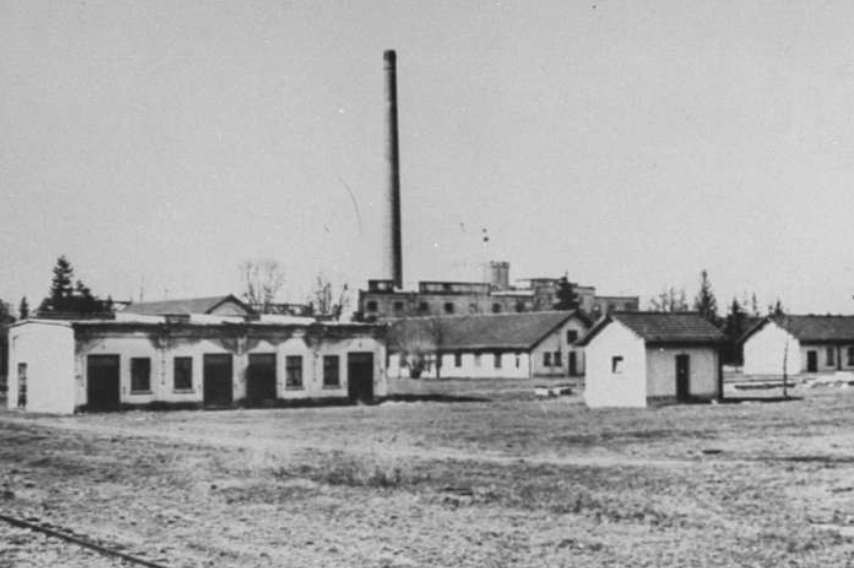
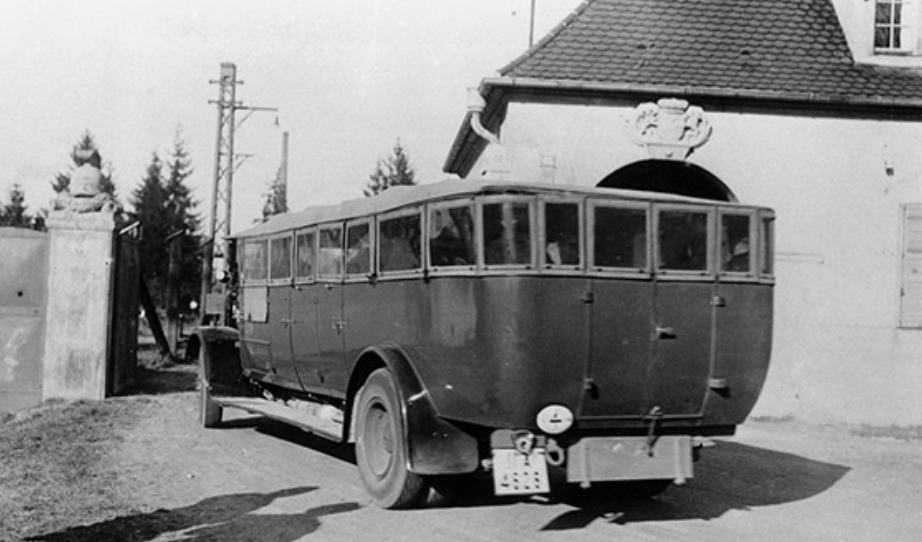
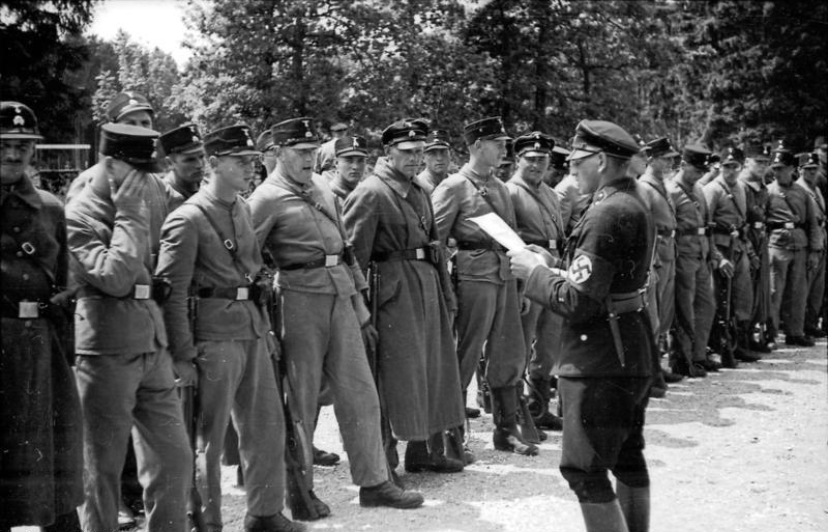
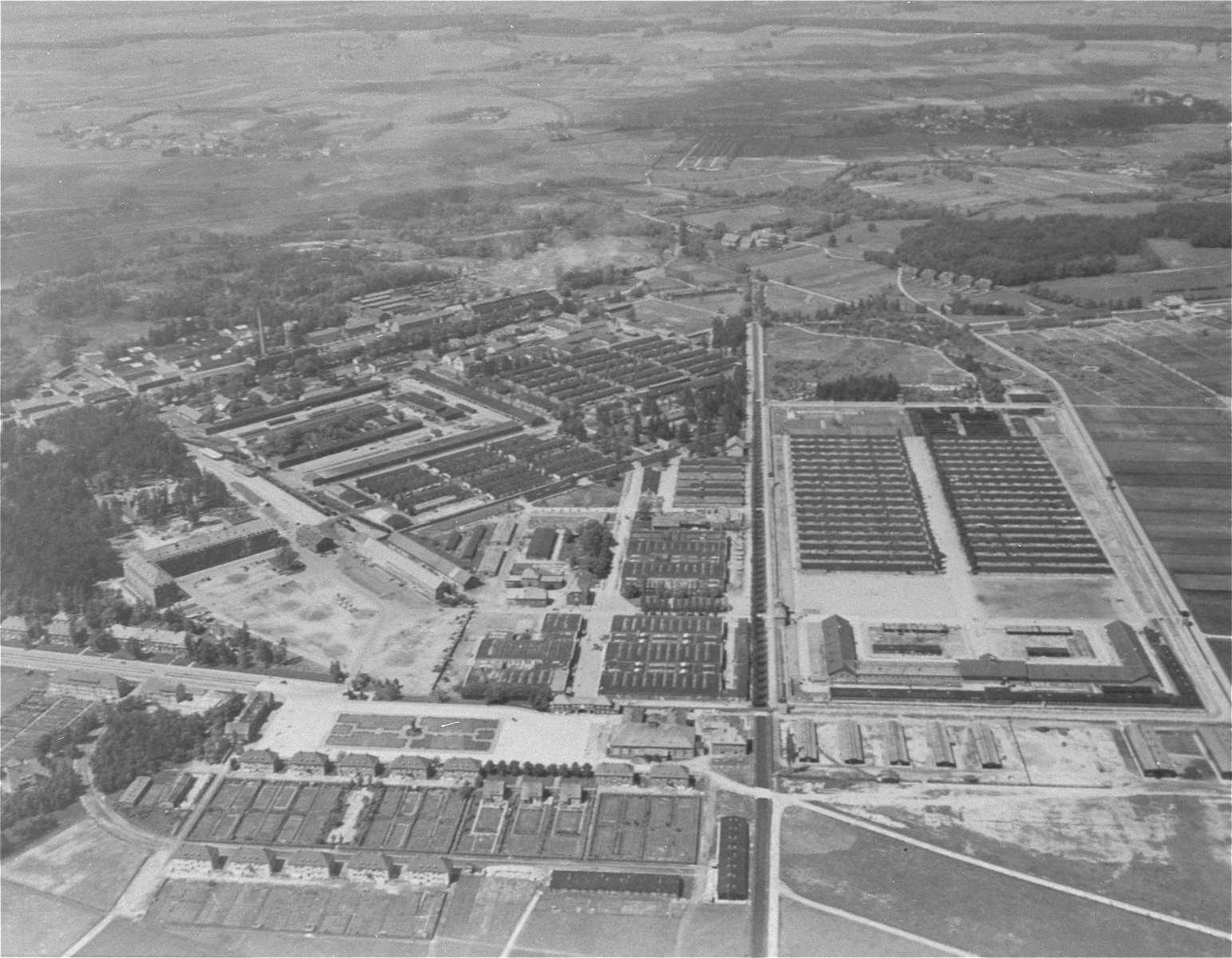
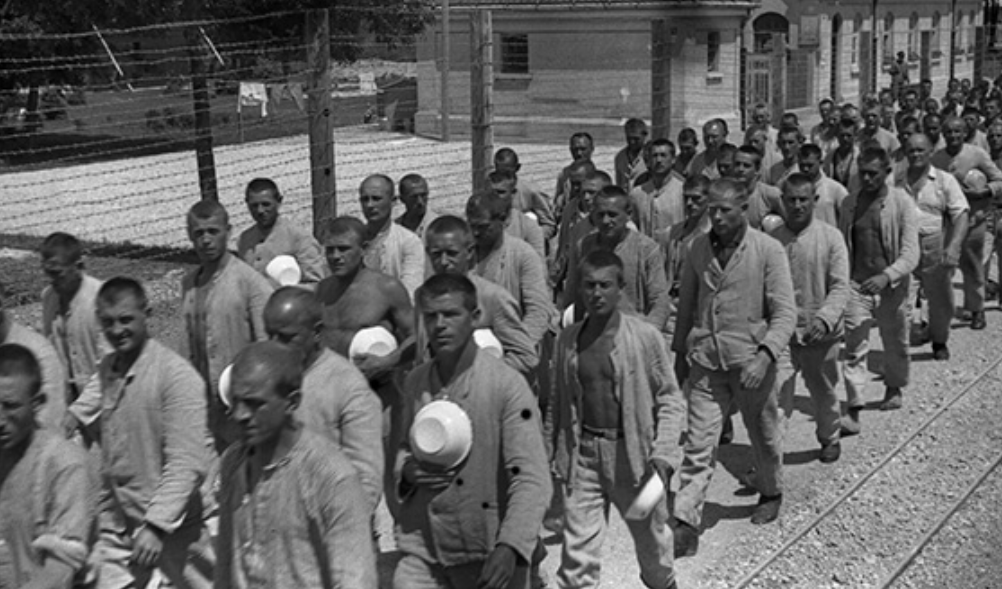
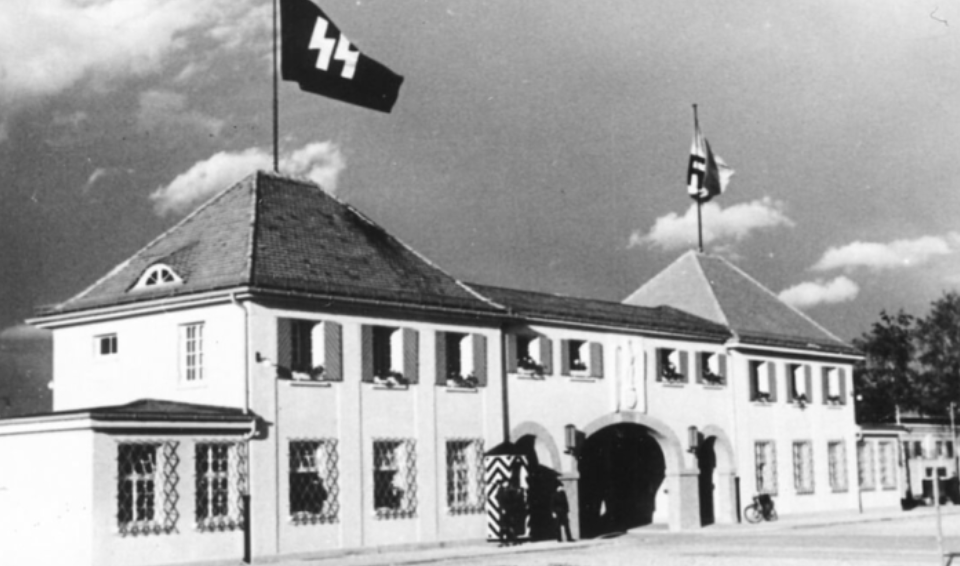
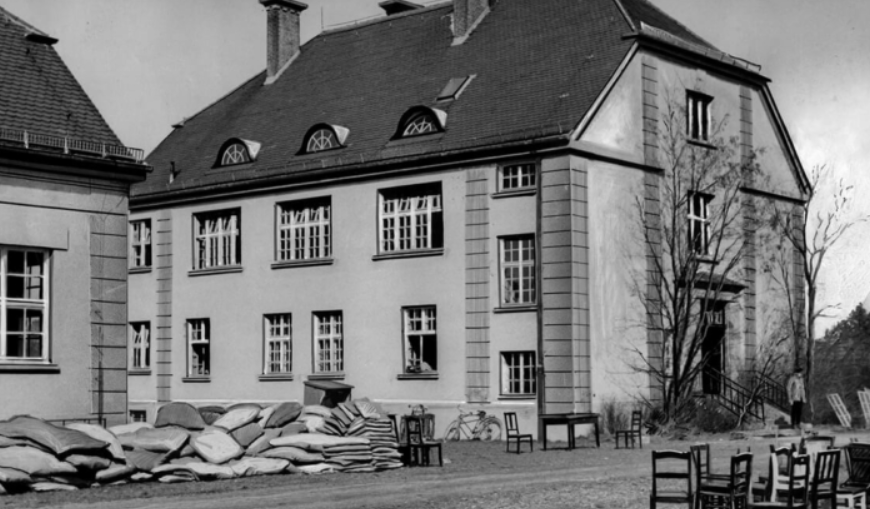
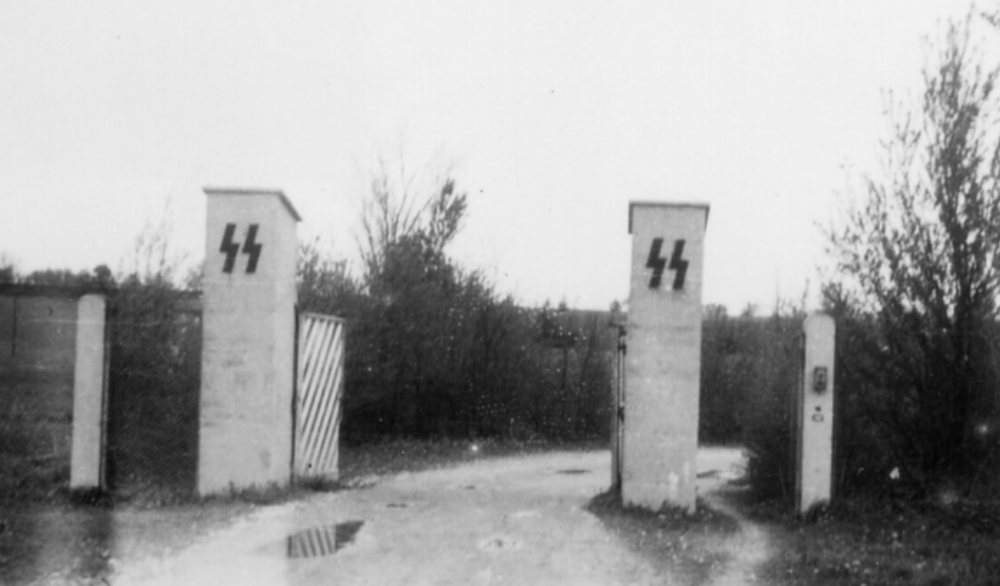
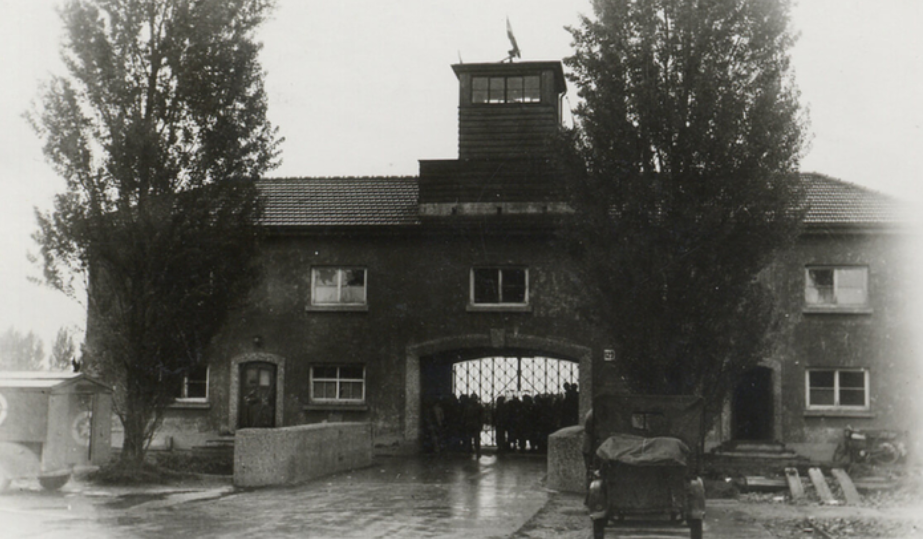

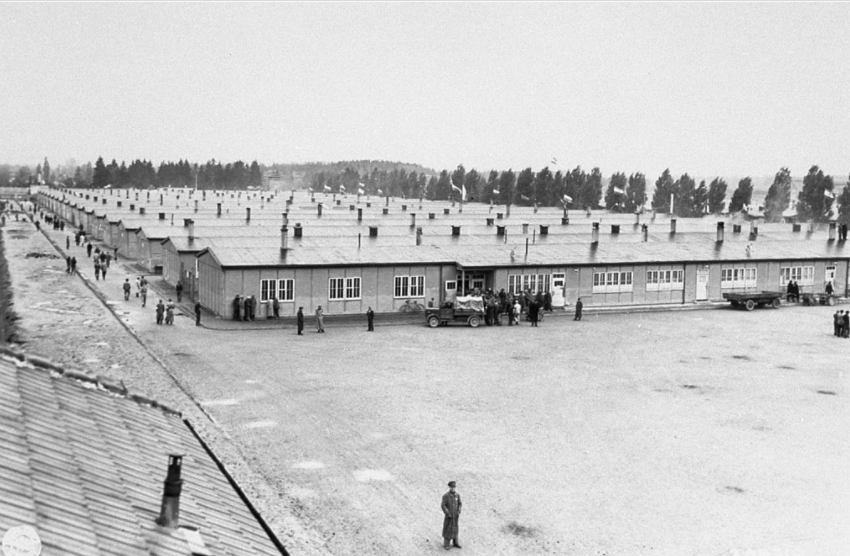

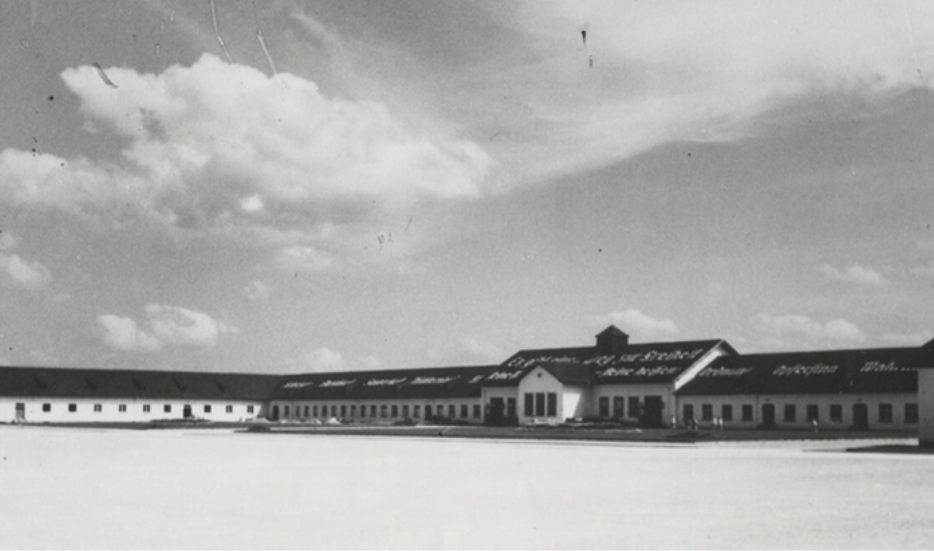

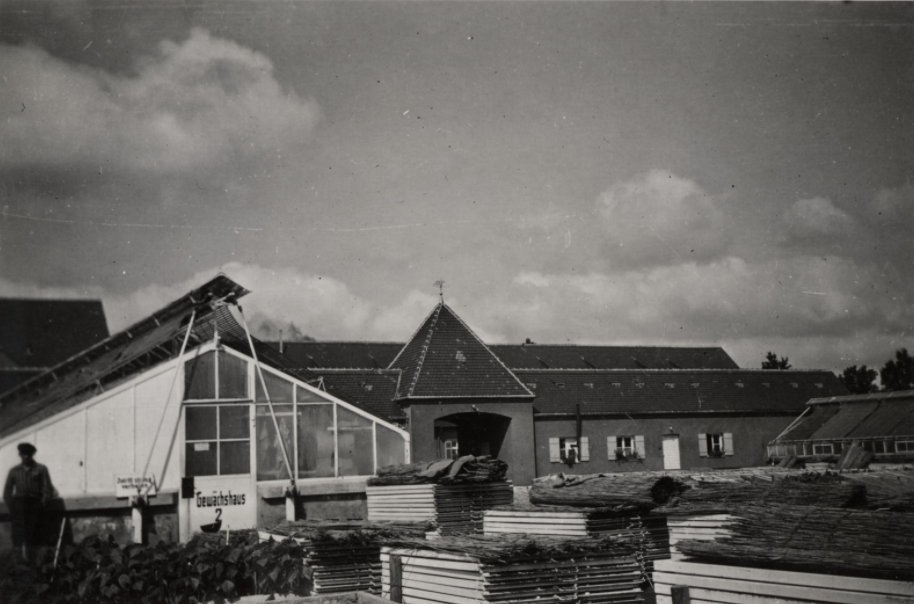
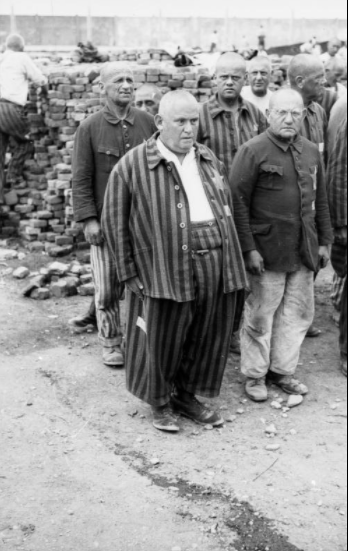
 Posted in
Posted in  Tags:
Tags: 
















